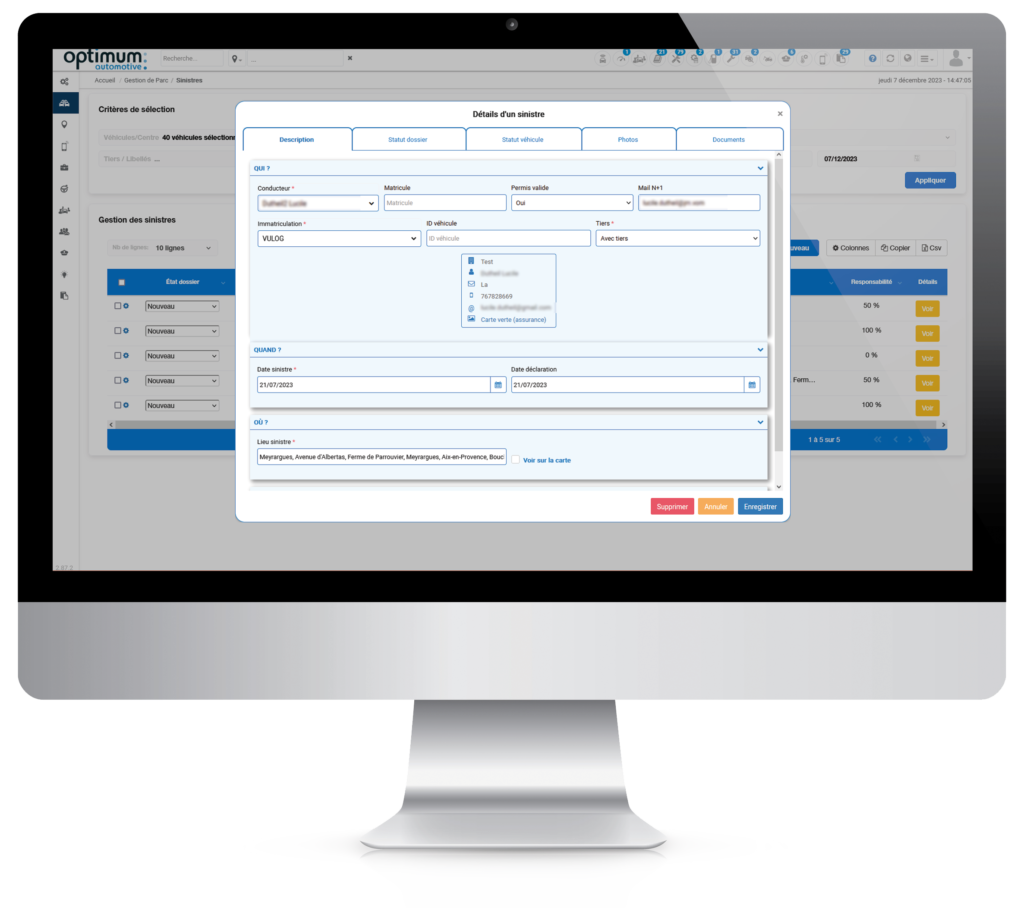
Despite recent changes in professional mobility, the vehicle remains one of the main means of transport used by employees to carry out their work. Whether they are company or service vehicles, full service leasing is still by and large the preferred way for companies to build up their car fleets.
Although long-term vehicle leasing has many advantages, the cost of returning vehicles at the end of the contract is a negative factor. Lacking visibility of the actual condition of their vehicles, many fleet managers find themselves caught off guard when the time comes to return them. Scratches, scuffs and bumps of all kinds are frequently overlooked by drivers, and are therefore ignored by the fleet manager, who discovers the truth when the vehicles are returned.
Very often, the repair costs invoiced by the leasing company exceed €2,000 or even €3,000 per vehicle. In such cases, it's hard to keep the fleet's TCO under control when such amounts are invoiced in fine and without any warning.
So what approach should you adopt? How can you reduce or even completely eliminate return costs at the end of the contract?
Part of the solution relies on drivers, but it must be complemented by other measures for optimum effectiveness.
Step 1: Putting drivers at the heart of the process!

Vehicles are generally leased for 36, 48 or even 60 months. Over such periods, it is not unusual to see various types of damage and wear and tear.
All too often, however, drivers forget, whether deliberately or not, to declare the damage to the fleet manager, who then finds himself in a situation of total blindness.
The first answer to this thorny question lies in the hands of the drivers. They need to be made aware of the consequences of this lack of information and encouraged to communicate more with their fleet manager.
Yes, but not just that!
Step 2: Provide a tool to facilitate communication!

They also need to be provided with a tool that facilitates communication with the fleet manager so that they can provide key information that is essential for anticipation.
For example, this is what Optimum Automotivea European specialist in connected vehicles since 2006. The fleet management solutionIt consists of a web-based management platform (SaaS) and a mobile application (which provides the interface between the fleet manager and the drivers).
The claims management module developed by Optimum Automotive enables drivers to :
1 - Declaring a claim (place, date, time, circumstances, photos of damage, etc.)
2 - To carry out regular inventories of their vehicles:
- Frequency: defined by the fleet manager
- Notifications inviting drivers to carry out a full inspection of their vehicle according to a predefined schedule.
Drivers follow a "photo reportage scenario" comprising 18 required checkpoints (unlimited number of photos): bodywork, vehicle interior, tyres, etc. Nothing is left to chance! Nothing is left to chance!
Step 3: requesting a vehicle survey
Depending on the size of the fleet, scrutinising these photos can require a significant investment of time.

To lighten the load, Optimum Automotive calls in a team of experts specialising in vehicle repairs. They will analyse the damage in detail and estimate the cost of the repairs needed to keep the vehicle in perfect condition.
Step 4: Anticipate rather than suffer
Armed with this invaluable information throughout the vehicle?s operating cycle (photos of damage, estimates for repairs), the fleet manager is in a position to make informed choices: return the vehicle as is (see contractual rental tolerances), repairs with or without recourse to insurance?
When the time comes to return the vehicles, the fleet manager can rest easy knowing that the vehicles returned comply with the initial rental contract and that, depending on the action taken, he or she will not be billed for any return costs!
In conclusion

New-generation tools make it possible to streamline the flow of information between drivers and fleet managers, who now have full visibility of the real state of the fleet.
The support of automotive experts also makes it possible to anticipate repair costs at a lower cost, and to eliminate return costs for better control of the fleet?s TCO. In addition to the economic aspects, regular checks on vehicles also help to preserve the company?s "brand image" (e.g. by checking that vehicles are branded) and employer brand (e.g. by making the benefits available to employees more attractive), as well as preventing road risk (e.g. by checking tyre wear). As we all know, a well-maintained vehicle (e.g. checking the condition of its tyres) is safer than one that has been abandoned.


